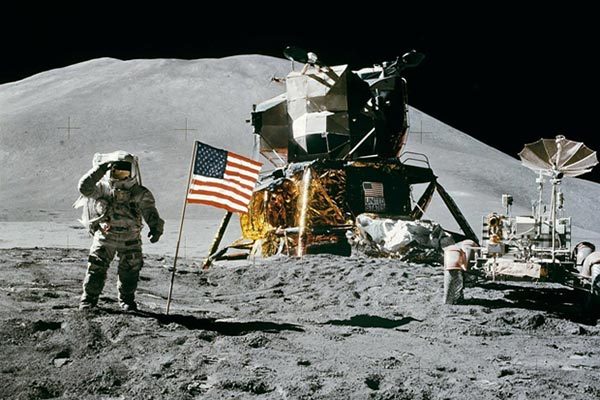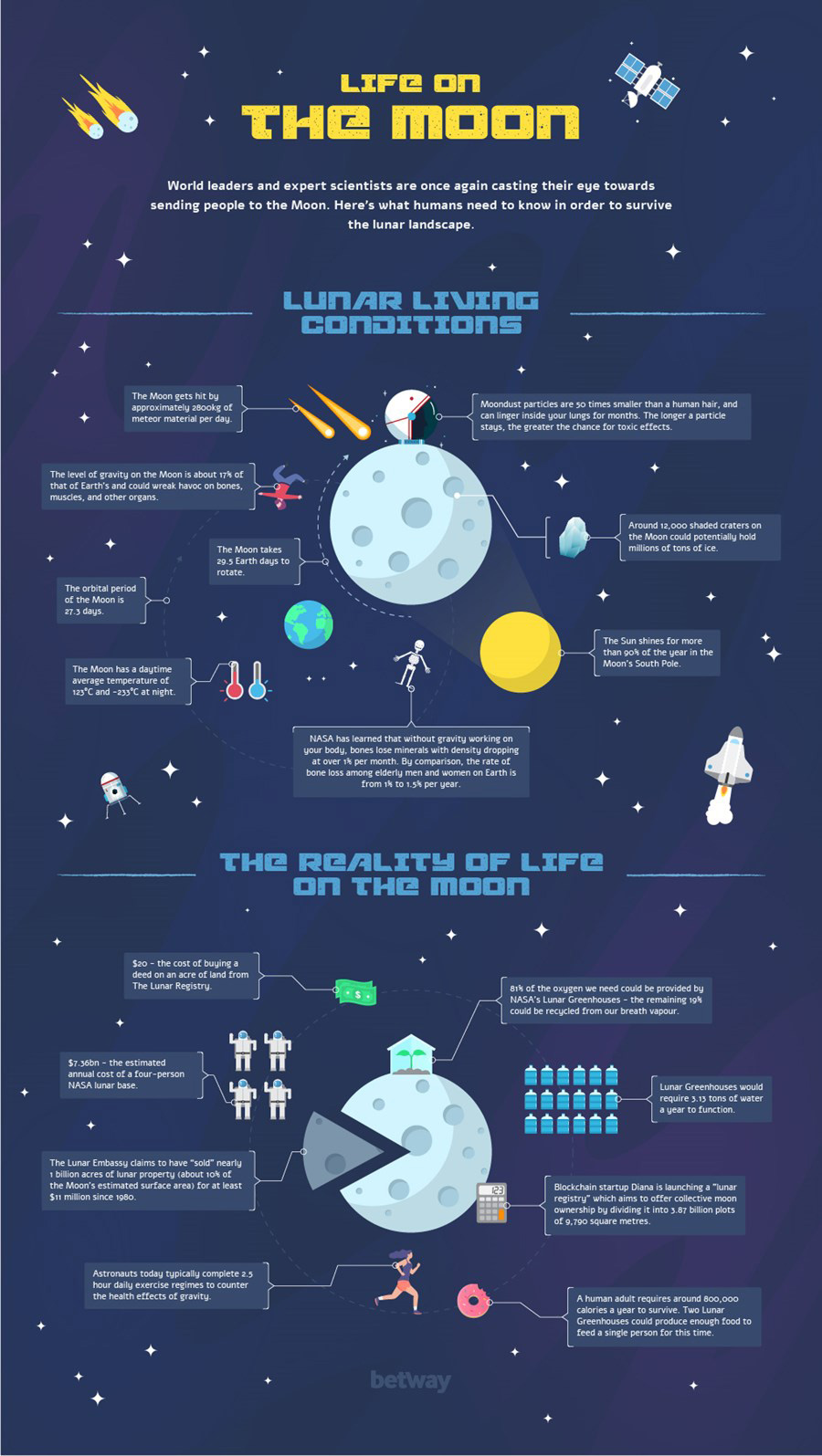The moon has always been a popular topic across the world. Before the landing of Apollo in 1969, there was significant uncertainty and curiosity about the consistency of the moon’s surface. Several movies and novels further added to the curiosity of the masses with their amazing creativity.

Some people even believed that the moon’s surface is covered by a layer of fine dust flowing almost like water. The recent announcement of plans by Trump to secure a permanent lunar base by 2028, has rekindled the curiosity around the nature of life on the moon.
Differences between life on Earth and the moon
Sleep
The moon consumes 29.5 Earth days to complete one rotation. This means two Earth weeks of daylight is followed by two weeks of the night almost everywhere on the moon. It will be challenging to maintain a healthy sleep cycle throughout the stay. With it falling into darkness for 14 days at a time, the temperatures drop to 280 degrees F below zero. It is only the south pole, which has locations that receive sunlight almost all the time and have moderate temperature conditions.
The lunar sky
Since there is no atmosphere, the lunar sky always appears black, even with the sun shining. However, since the sunshine produces considerable light, all other than the brightest stars will not be visible during the daytime. This is also the reason why most stars next to the full moon are not visible. Nevertheless, the night sky from the moon would look spectacular. It is suspected that at the South Pole, many more stars would be visible.
View of the Earth
The Earth is 3.7 times larger than the moon. This is why it covers 15 times more of the sky as compared to the moon. The sight of the Earth is spectacular from the moon. With the Earth appearing more massive, and full of colors makes it even more beautiful. If you have good eyesight, you might also be able to spot the continents. Furthermore, the Earth completes its rotation 24 hours. Therefore, it allows one to see all sides of the Earth. There will also be phases of the Earth as we have the phases of the moon.
Meteors
One must be aware that tiny micrometeorites constantly bombard the moon’s surface; however, visible ones from the Earth rarely hit the moon. In contrast to the Earth, the meteors do not get slowed down and burned up due to the absence of an atmosphere. Thus, all of them hit the moon surface at an astonishing speed. Fortunately, the possibility of getting hit by a meteor is considerably low. However, it will always be a point of danger. The moon-walkers wore protection suits to save them from micro meteors and could only wish not to be hit by the bigger ones.
Life on the moon
Inspired by a recent article by Betway, while planning a lunar living, one needs to take into consideration the many necessities required for a comfortable lifestyle.
Cost of living
Though the Earth is expensive, the moon stands very high in the competition. It is said that the moon is the most hostile place in our entire solar system. The shelter that you require should be well equipped to protect you against micro meteors and their ejects. It should be able to cope up with high-temperature variations and shield you from the radiation of cosmic rays, solar flare, and toxic lunar dust. The cost of the annual operation of a four-person NASA lunar base is estimated to be $7.35 billion.
Cost of sustenance
To survive, an adult person requires around 800,000 calories every year. Two lunar greenhouses developed by the University of Arizona can produce enough food for the sustenance of a single person. However, for the sustenance of the greenhouse, one will have to carry 36.5 kg of fertilizer from the Earth. The transport and purchase is estimated to be around $5.9 billion.
Water
As far as water is considered, an approximate of 10.6 tons of water is consumed by an adult human every year. Other than humans, the greenhouse will also require 3.13 tons of water per year to be functional. Therefore, the shipping and storage cost of water is estimated to be around $43 billion. With recently discovered water content in the moon’s soil, scientists are now expecting to devise a plan that can produce water natively without the need for any hefty transportation.
What changes will be needed?
Since the moon has considerably different underlying conditions than those on the earth, it becomes crucial to keep these prevalent changes into considering if humans ever want to convert their moon living dream into the picture. There are a ton of things that differ when it comes to the environmental conditions existing on the surface of the moon, which is why being mindful of these is an unavoidable option. The following infographic aims to provide a clear idea of some of the essential modifications we’ll have to make in order to get used to the conditions up there.
Takeaway
With NASA planning to revisit the moon by 2024, the world is optimistic that lunar life is not a far fetched dream anymore. These missions will enhance humanity and will allow us to explore several new worlds. It has the potential to create an entirely new economy and civilization and take humanity to a further level.


Comments are closed.